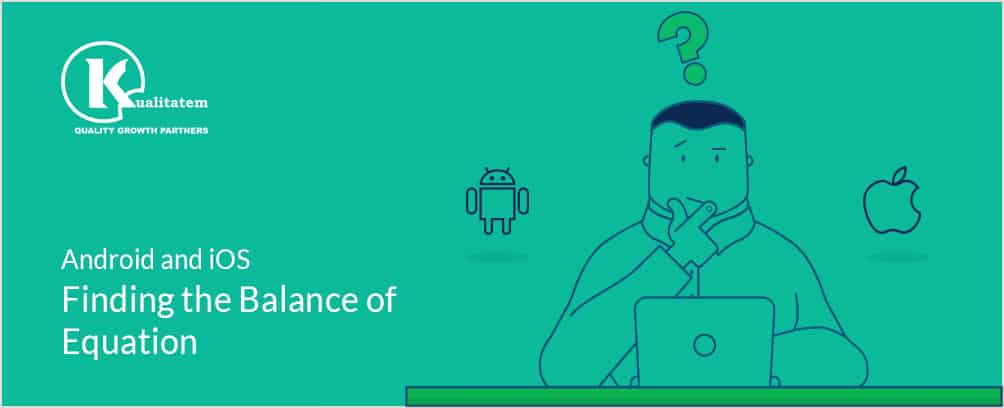Android And iOS – Finding The Balance Of Equation

- February 13, 2017
- admin
From the dawn of the smartphones the operating systems running these phones such as Android and iOS, have always dominated the mobile markets, the devices, and above all the users’ minds. There seems to be no signs of any change taking place anytime soon.
As of the last quarter of 2016, Android is by a long shot the largest smartphone operating system being used with 86% of the global market share. While on the other hand only 13% of worldwide smartphone users are iOS based.
The difference in the number of users of both the platforms is based on some factors;
Android and iOS Development Environment:
Android applications are developed using Android studio while programming in Java and using the Android SDK simultaneously.
On the other hand, an iOS application is developed using X-Code and iOS SDK and is programmed in Objective-C.
The development environment for iOS is only done on MAC machine and hence a powerful machine is required. This increases the investment required to develop an app for iOS significantly.
Publication:
To publish an Android app, one needs to sign up, make a one-off payment of $25, upload the APK file and that’s it. The application will be live on the store in a couple of hours.
However, for iOS one has to pay a recurring annual fee of $99, and submit the app.
Real-time human users will use this app for about 5-6 days and only then will make it live on the store if everything goes well.
The application may get rejected if it is found to be offensive or lowbrow.
User Experience (UX):
The Android applications have a better user experience as compared to the iOS ones.
The Android applications have a real-life design as compared to the sleek design of the iOS applications. The layout of both is quite different.
Android has a drawer system while iOS use tab bar to navigate. Android based phones have a real back button on the device, while for iOS devices it is needed to be implemented in the application.
Fragmentation:
The number of Android devices and their models available worldwide is uncountable. Whereas iOS based devices includes only the iPhones, iPods and iPads.
Android users can change or upgrade their devices as thousands of new models are launched every year. However, iOS users have to wait too long for a new device and an OS update.
Demographics:
Android dominates the market of the developing economies which includes countries mainly from Africa and Asia whereas iOS covers the stable economies like America, Canada, EU, China and Japan.
Although the iOS applications are not too costly but the iOS devices are quite expensive as compared to the Android ones and hence people prefer to spend less on the devices.
Based on the above five factors, we can easily conclude that the difference of numbers is nothing but based on the preferences and priorities of the users. It is also highly arguable amongst the masses that the iOS is for the riches and the Android is for cheaper side of the market. But that is a case yet to be closed.
In the days to come we are still unaware which technology will surpass which, but the size of the market is still inclined towards Android. At least for now! 🙂











